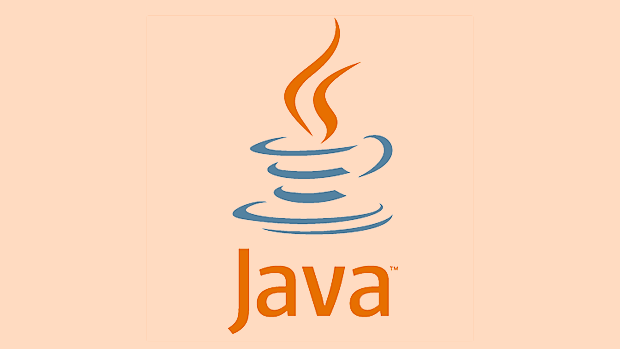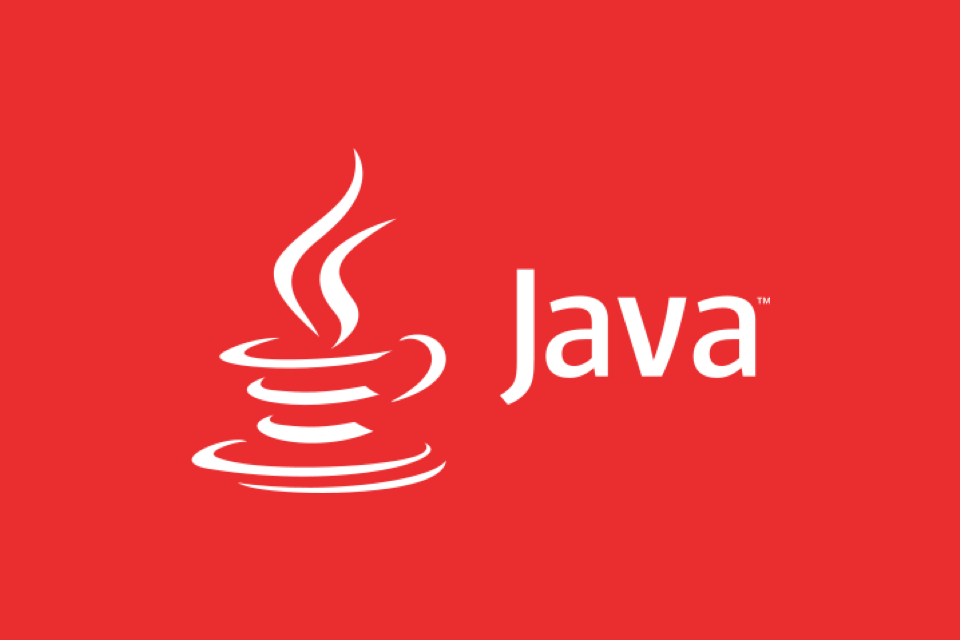A Developer's Guide to Java Logging Frameworks
Aug 01, 2025 am 06:32 AMUse SLF4J for logging abstraction to decouple code from implementation. 2. Choose Logback for simplicity and Spring Boot compatibility or Log4j 2 for high performance and advanced features. 3. Avoid JUL and Log4j 1.x except in legacy systems. 4. Route JUL logs to SLF4J using jul-to-slf4j when needed. 5. Always log exceptions with the exception object, use parameterized messages, avoid sensitive data, enable structured logging, and test configurations—this ensures maintainable, debuggable, and secure logging in production.

Java logging is one of those things every developer uses but often doesn’t think deeply about—until something goes wrong in production. Choosing the right logging framework (or understanding how the ones you’re already using work together) can save you hours of debugging and make your application more maintainable.

Let’s break down the Java logging landscape in a practical, developer-friendly way—no marketing fluff, just what you need to know to make good decisions.
1. The Core: java.util.logging (JUL)
Built-in, but often overlooked

Java comes with its own logging framework: java.util.logging, or JUL for short. It's part of the standard library, so you don't need any external dependencies.
import java.util.logging.Logger;
public class MyApp {
private static final Logger logger = Logger.getLogger(MyApp.class.getName());
public void doSomething() {
logger.info("Something happened");
}
}Pros:

- No extra dependencies
- Simple for basic use
- Works out of the box
Cons:
- Limited features compared to others
- Verbose configuration
- Poor performance under high load
- Not widely used in modern frameworks
When to use it: Small apps, learning, or environments where you can't add dependencies. Otherwise, most teams opt for something more powerful.
2. The Old Guard: Log4j 1.x
Once dominant, now deprecated
Log4j was the go-to logging framework in the early 2000s. It offered flexibility, performance, and configurability via XML or properties files.
But Log4j 1.x is deprecated. Don’t use it in new projects. It’s unmaintained, has known performance issues, and lacks modern features.
3. The Popular Choice: Log4j 2
Modern, fast, and feature-rich
Log4j 2 is a complete rewrite of Log4j 1.x and is actively maintained by Apache. It fixes the architectural flaws of its predecessor and adds great features.
<!-- log4j2.xml -->
<Configuration>
<Appenders>
<Console name="Console" target="SYSTEM_OUT">
<PatternLayout pattern="%d{HH:mm:ss} [%t] %-5level %logger{36} - %msg%n"/>
</Console>
</Appenders>
<Loggers>
<Root level="info">
<AppenderRef ref="Console"/>
</Root>
</Logers>
</Configuration>Pros:
- Excellent performance (especially with async loggers)
- Modular architecture
- Supports JSON, custom levels, plugins
- Integrates well with modern tools (Kafka, AWS, etc.)
Cons:
- Suffers from the shadow of the 2021 Log4Shell vulnerability (CVE-2021-44228), though it's been fixed and patched
- Slightly heavier than some alternatives
Use case: High-performance applications, microservices, or when you need advanced logging features.
4. The Elegant Alternative: Logback
The spiritual successor to Log4j 1.x
Developed by Ceki Gülcü (the original author of Log4j), Logback was designed to be faster and more flexible than its predecessor. It’s the native implementation of SLF4J (more on that soon).
<!-- logback.xml -->
<configuration>
<appender name="STDOUT" class="ch.qos.logback.core.ConsoleAppender">
<encoder>
<pattern>%d{HH:mm:ss} [%thread] %-5level %logger{36} - %msg%n</pattern>
</encoder>
</appender>
<root level="info">
<appender-ref ref="STDOUT" />
</root>
</configuration>Pros:
- Fast and reliable
- Great documentation
- Built-in support for auto-reloading config files
- Seamless integration with SLF4J
Cons:
- No built-in support for JSON formatting (requires extra libraries)
- Development has slowed a bit compared to Log4j 2
Use case: Spring Boot apps (which use Logback by default), or when you want a clean, mature setup.
5. The Abstraction Layer: SLF4J (Simple Logging Facade for Java)
Not a logging framework—it’s a facade
SLF4J isn’t a logger itself. It’s a logging abstraction that lets you write logging code without tying it to a specific backend.
import org.slf4j.Logger;
import org.slf4j.LoggerFactory;
public class MyService {
private static final Logger logger = LoggerFactory.getLogger(MyService.class);
public void process() {
logger.info("Processing item: {}", itemId);
}
}Why it matters:
- Decouples your code from the actual logging framework
- You can switch from Logback to Log4j 2 (or JUL) just by changing dependencies
- Provides clean, parameterized logging (no string concatenation in hot paths)
How it works:
- You code against
SLF4JAPIs - At runtime, SLF4J binds to a real implementation (Logback, Log4j 2, JUL, etc.)
- Use
slf4j-apione binding (e.g.,logback-classicorlog4j-slf4j-impl)
Pro tip: Always depend on slf4j-api, never on a concrete logging framework directly in libraries.
6. The New Kid: java.util.logging SLF4J? Or JUL gone?
Wait—what about JUL and SLF4J?
You can route JUL logs into SLF4J using jul-to-slf4j bridge. This lets you centralize all logging (even from legacy code or libraries using JUL) into your main logging pipeline.
// At app startup SLF4JBridgeHandler.install();
Now java.util.logging.Logger messages go through SLF4J and appear in your Logback/Log4j 2 output.
7. Best Practices for Real-World Apps
Here’s what works in production:
- ? Use SLF4J in your code — always
- ? Pick one backend: Logback (simpler) or Log4j 2 (faster, more features)
- ? Avoid logging sensitive data — mask passwords, tokens, PII
- ? Use structured logging when possible — consider Logstash or JSON layouts
- ? Don’t concatenate strings in log statements — use placeholders
logger.debug("User {} logged in from {}", user.getId(), ip); // Good
logger.debug("User " user.getId() " logged in"); // Bad — always evaluates string- ? Control log levels per package — e.g.,
debugfor your app,warnfor third-party libs - ? Test your logging config — make sure it works in staging
Final Thoughts
You don’t need to overthink logging—but you should get it right early.
For most new projects:
- Use SLF4J Logback if you want simplicity and solid defaults (especially with Spring Boot)
- Use SLF4J Log4j 2 if you need maximum performance or advanced features
Avoid JUL and Log4j 1.x unless you’re maintaining legacy code.
And no matter what—never log exceptions like this:
} catch (Exception e) {
logger.error("Something broke");
}Always include the exception:
} catch (Exception e) {
logger.error("Something broke", e);
}Basically, that’s it. Solid logging isn’t flashy, but it’s one of the best things you can do for your future self.
The above is the detailed content of A Developer's Guide to Java Logging Frameworks. For more information, please follow other related articles on the PHP Chinese website!

Hot AI Tools

Undress AI Tool
Undress images for free

Undresser.AI Undress
AI-powered app for creating realistic nude photos

AI Clothes Remover
Online AI tool for removing clothes from photos.

Clothoff.io
AI clothes remover

Video Face Swap
Swap faces in any video effortlessly with our completely free AI face swap tool!

Hot Article

Hot Tools

Notepad++7.3.1
Easy-to-use and free code editor

SublimeText3 Chinese version
Chinese version, very easy to use

Zend Studio 13.0.1
Powerful PHP integrated development environment

Dreamweaver CS6
Visual web development tools

SublimeText3 Mac version
God-level code editing software (SublimeText3)

Hot Topics
 VSCode settings.json location
Aug 01, 2025 am 06:12 AM
VSCode settings.json location
Aug 01, 2025 am 06:12 AM
The settings.json file is located in the user-level or workspace-level path and is used to customize VSCode settings. 1. User-level path: Windows is C:\Users\\AppData\Roaming\Code\User\settings.json, macOS is /Users//Library/ApplicationSupport/Code/User/settings.json, Linux is /home//.config/Code/User/settings.json; 2. Workspace-level path: .vscode/settings in the project root directory
 How to handle transactions in Java with JDBC?
Aug 02, 2025 pm 12:29 PM
How to handle transactions in Java with JDBC?
Aug 02, 2025 pm 12:29 PM
To correctly handle JDBC transactions, you must first turn off the automatic commit mode, then perform multiple operations, and finally commit or rollback according to the results; 1. Call conn.setAutoCommit(false) to start the transaction; 2. Execute multiple SQL operations, such as INSERT and UPDATE; 3. Call conn.commit() if all operations are successful, and call conn.rollback() if an exception occurs to ensure data consistency; at the same time, try-with-resources should be used to manage resources, properly handle exceptions and close connections to avoid connection leakage; in addition, it is recommended to use connection pools and set save points to achieve partial rollback, and keep transactions as short as possible to improve performance.
 Full-Stack Web Development with Java, Spring Boot, and React
Jul 31, 2025 am 03:33 AM
Full-Stack Web Development with Java, Spring Boot, and React
Jul 31, 2025 am 03:33 AM
Selecting the Java SpringBoot React technology stack can build stable and efficient full-stack web applications, suitable for small and medium-sized to large enterprise-level systems. 2. The backend uses SpringBoot to quickly build RESTfulAPI. The core components include SpringWeb, SpringDataJPA, SpringSecurity, Lombok and Swagger. The front-end separation is achieved through @RestController returning JSON data. 3. The front-end uses React (in conjunction with Vite or CreateReactApp) to develop a responsive interface, uses Axios to call the back-end API, and ReactRouter
 Java Performance Optimization and Profiling Techniques
Jul 31, 2025 am 03:58 AM
Java Performance Optimization and Profiling Techniques
Jul 31, 2025 am 03:58 AM
Use performance analysis tools to locate bottlenecks, use VisualVM or JProfiler in the development and testing stage, and give priority to Async-Profiler in the production environment; 2. Reduce object creation, reuse objects, use StringBuilder to replace string splicing, and select appropriate GC strategies; 3. Optimize collection usage, select and preset initial capacity according to the scene; 4. Optimize concurrency, use concurrent collections, reduce lock granularity, and set thread pool reasonably; 5. Tune JVM parameters, set reasonable heap size and low-latency garbage collector and enable GC logs; 6. Avoid reflection at the code level, replace wrapper classes with basic types, delay initialization, and use final and static; 7. Continuous performance testing and monitoring, combined with JMH
 python pytest fixture example
Jul 31, 2025 am 09:35 AM
python pytest fixture example
Jul 31, 2025 am 09:35 AM
fixture is a function used to provide preset environment or data for tests. 1. Use the @pytest.fixture decorator to define fixture; 2. Inject fixture in parameter form in the test function; 3. Execute setup before yield, and then teardown; 4. Control scope through scope parameters, such as function, module, etc.; 5. Place the shared fixture in conftest.py to achieve cross-file sharing, thereby improving the maintainability and reusability of tests.
 python itertools combinations example
Jul 31, 2025 am 09:53 AM
python itertools combinations example
Jul 31, 2025 am 09:53 AM
itertools.combinations is used to generate all non-repetitive combinations (order irrelevant) that selects a specified number of elements from the iterable object. Its usage includes: 1. Select 2 element combinations from the list, such as ('A','B'), ('A','C'), etc., to avoid repeated order; 2. Take 3 character combinations of strings, such as "abc" and "abd", which are suitable for subsequence generation; 3. Find the combinations where the sum of two numbers is equal to the target value, such as 1 5=6, simplify the double loop logic; the difference between combinations and arrangement lies in whether the order is important, combinations regard AB and BA as the same, while permutations are regarded as different;
 Mastering Dependency Injection in Java with Spring and Guice
Aug 01, 2025 am 05:53 AM
Mastering Dependency Injection in Java with Spring and Guice
Aug 01, 2025 am 05:53 AM
DependencyInjection(DI)isadesignpatternwhereobjectsreceivedependenciesexternally,promotingloosecouplingandeasiertestingthroughconstructor,setter,orfieldinjection.2.SpringFrameworkusesannotationslike@Component,@Service,and@AutowiredwithJava-basedconfi
 A Guide to Java Flight Recorder (JFR) and Mission Control
Jul 31, 2025 am 04:42 AM
A Guide to Java Flight Recorder (JFR) and Mission Control
Jul 31, 2025 am 04:42 AM
JavaFlightRecorder(JFR)andJavaMissionControl(JMC)providedeep,low-overheadinsightsintoJavaapplicationperformance.1.JFRcollectsruntimedatalikeGCbehavior,threadactivity,CPUusage,andcustomeventswithlessthan2%overhead,writingittoa.jfrfile.2.EnableJFRatsta






